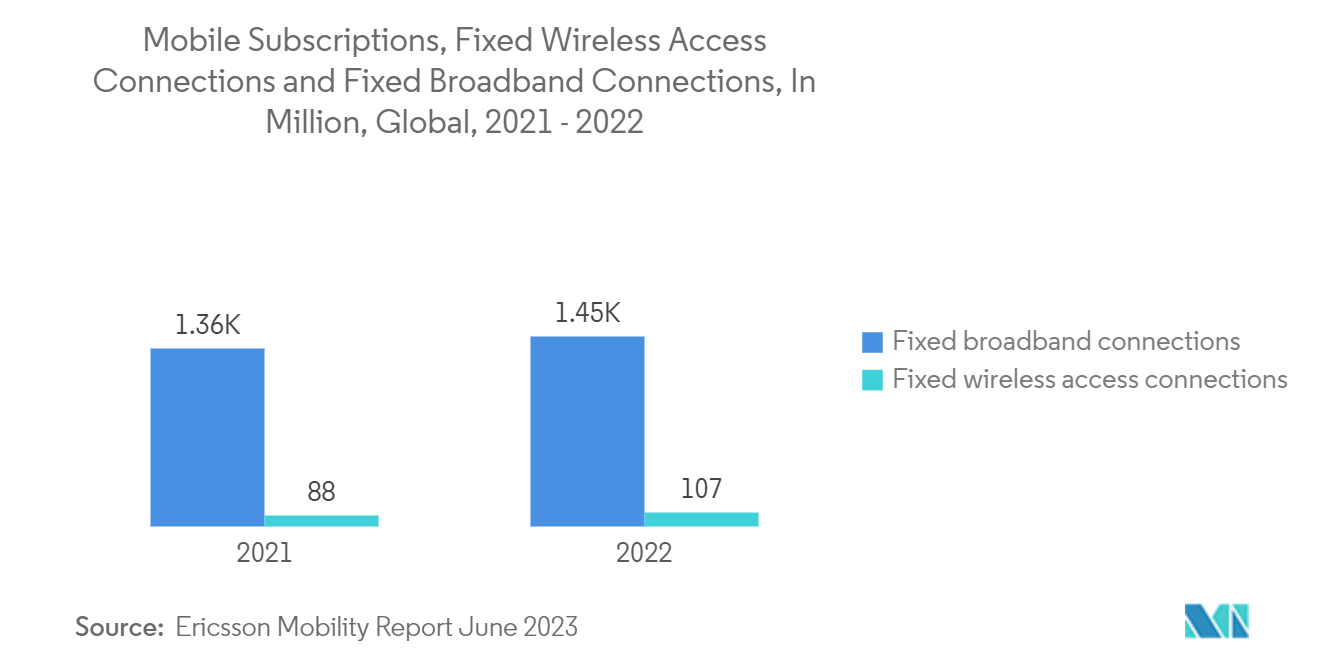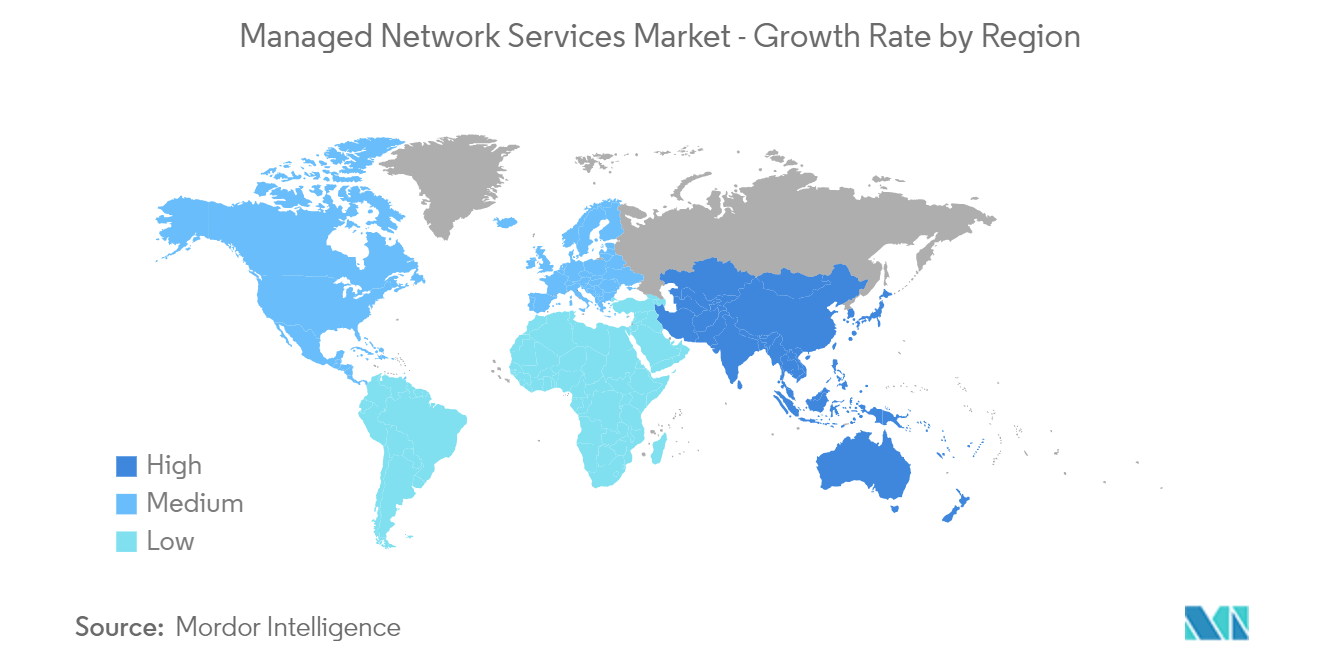Market Trends of Managed Network Services Industry
IT and Telecom Sector to be the Largest End User
- Modernizing IT service management for the IT and telecommunications sectors is quite a mature methodology. This bridges the gap between on-premise and cloud-based IT solutions. It improves operational effectiveness and efficiency. As a result, integrating how data is recorded, processed, and shared across companies enhances the experience for internal IT personnel and external constituents.
- With the rapid growth of technology, telecommunication companies are constantly concentrating on innovation. As a result, they are enhancing their infrastructure while providing advanced solutions to support their clients, such as innovation, customer service, infrastructure configuration, and human resources.
- The increased adoption of 5G networks is the current market trend. Mobile network operators handle the increasing complexity caused by implementing 5G and the requirement for dependable, secure, and robust connections. The increased number of devices, a diversity of new technologies, and a broader spectrum of service requirements drive this complexity. As the 5G usage cases become more sophisticated, demanding, and vital, secure user experience has become the primary end-user expectation.
- When 5G networks are planned, developed, built, and implemented, the emphasis shifts to supporting end users' whole security and quality experience. This further necessitates a fundamental shift in how deployed networks are managed and optimized.
- To successfully operate high-performance service-driven networks securely and depart from the traditional network resource management model, where technology-related capacity, availability, and performance are critical, the 5G network operations and optimization require a shift from technology-centric to end-user service-centric. As a result, there is an increase in the demand for telecom-managed services to help with this transition, thereby driving the market revenue growth. According to Ericsson Mobility Report, June 2023, the growth in 5G subscriptions is expected to continue into the foreseeable future, reaching 1.5 billion subscriptions globally by the end of the year, which includes an increase of 500 million subscriptions in the past one year.
- Various players across the world are undertaking various initiatives as a move toward the adoption of managed services. Large enterprises segment has emerged to be a growing segment in the market. Companies are making significant efforts to offer enhanced managed services.

Asia Pacific Holds a Dominant Position in Managed Network Services Market
- The managed network services market in the Asia-Pacific (APAC) region is expanding due to several key factors. The demand for managed network services is driven by rapid digital transformation, rising penetration of mobile devices and the Internet, growing e-commerce, and a need for reliable high-speed connectivity. Some companies seek to integrate new digital technologies into the digital revolution movement. As firms continue to invest in digital transformation, every company has enlisted the help of a managed network services provider.
- APAC businesses recognize the benefits of network management to ensure efficient operations and robust cybersecurity, fueling the growth of the market.
- Several market players are involved in numerous strategies to gain a competitive edge, further fueling the demand for Managed Network Services. In June 2023, at Mobile World Congress Shanghai 2023 (MWCSH 2023), Huawei launched a product and solution innovation and practice sharing event. During this event, the company shared the latest innovations and practices with its digitally managed network solution in the data communication field, aiming to help carriers transform from Internet service providers to managed service providers and capture new opportunities in digital transformation, thereby driving the growth of the market.
- By end user, the manufacturing segment is expected to grow. The manufacturing sector in the region has recorded a tremendous digital revolution in recent years. The Chinese government has actively supported digital technologies in traditional manufacturing processes to increase production efficiency and encourage innovation.
- With growing digital transformation, the need for reliable and high-speed connectivity, safeguarding digital operations, and complying with regulatory standards, along with the developments by the market players, are expected to drive the growth of the market in the region.



